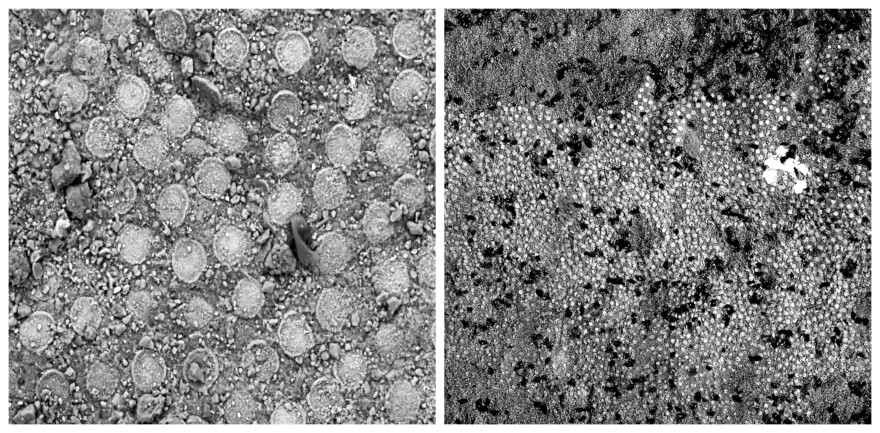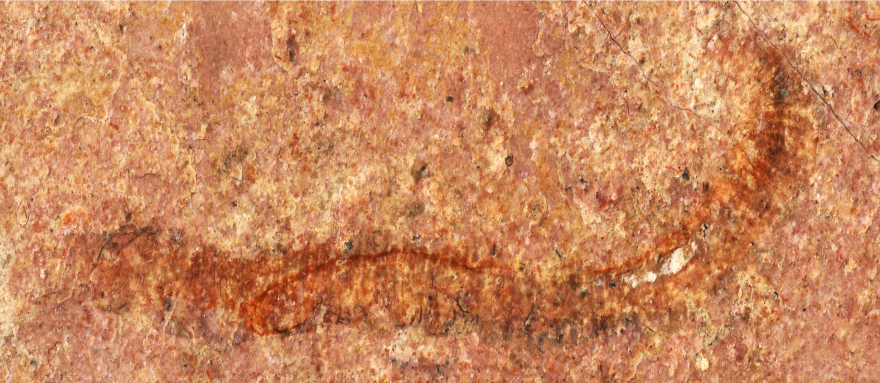Missouri researchers have identified a new type of prehistoric worm that lived on the ocean floor about 500 million years ago, capturing prey with its spear-like mouthparts.
The now-extinct worms, known as palaeoscolecids, were small and skinny — some only about as thick as a nickel. Though common in other parts of the world, including China and Australia, palaeoscolecid fossils are rarely found in North America.
Several boxes of these ancient worm fossils had been tucked away inside a metal cabinet in the University of Kansas paleontology collection for almost 30 years, until a pair of students decided to take a closer look. Using high-powered microscopes, the research team found the fossil specimens belong to a completely new scientific group.
Palaeoscolecids were covered in hundreds of microscopic, disc-like plates, like a miniature suit of armor. The key to identifying the fossilized worms lies in these plates, which have different sizes, shapes and patterns.
But the problem, says University of Missouri graduate student and study co-author Wade Leibach, is that the fossils are often found in tiny fragments.
When the worms died, millions of years ago, “the soft tissues that held these plates together would often break down and the plates just kind of scattered into the water,” said Leibach, who began the study as an undergraduate at the University of Kansas.
Years earlier, a collector had donated several rare, complete palaeoscolecid fossils that he found in western Utah to the university’s paleontology collection. The prehistoric worms were pressed into the burnished red rock, clearly outlined, but impossible to identify by eye.
So Leibach and study co-author Anna Whitaker, a graduate student at the University of Kansas at the time, turned to a technology known as scanning electron microscopy.
“We're basically shooting electrons at the surface of these fossils, which interact with the atoms on the surface and bounce back,” said Whitaker, now a Ph.D. student at the University of Toronto Mississauga. “That allows us to get a really clear image of the surface of the fossil itself.”

The black-and-white photos showed a moonscape of bumps and craters in the worms’ microscopic plates — and revealed that two of the specimens were a previously undiscovered species.
“I’ll be honest, it’s always kind of exciting to name something new,” said Leibach, who dubbed it Arrakiscolex aasei, after the fictional planet in the novel “Dune” that's inhabited by massive armored worms.
The discovery helps fill in one more gap in our knowledge of these ancient creatures, but there’s still so much that we don’t know about them, Whitaker said. For one thing, it’s unclear why palaeoscolecid fossils are rare in North America.
“Why don’t we have very many specimens?” Whitaker said. “Is it because they weren’t super abundant? Is it because of competition with other worms or animals that were filling those niches? Or are we just not looking for palaeoscolecids?”
Whitaker suspects there may be more fossils sitting in museum collections that are new species, waiting to be identified and cataloged — an area of research she hopes to take on one day.
“They're fascinating,” she said. “Everyone should be definitely fighting over these little worm fossils, instead of dinosaurs.”
Copyright 2021 KCUR 89.3. To see more, visit KCUR 89.3. 9(MDAxODQ2NTcwMDEyMTczNTUzNDMzODFkZQ004))


